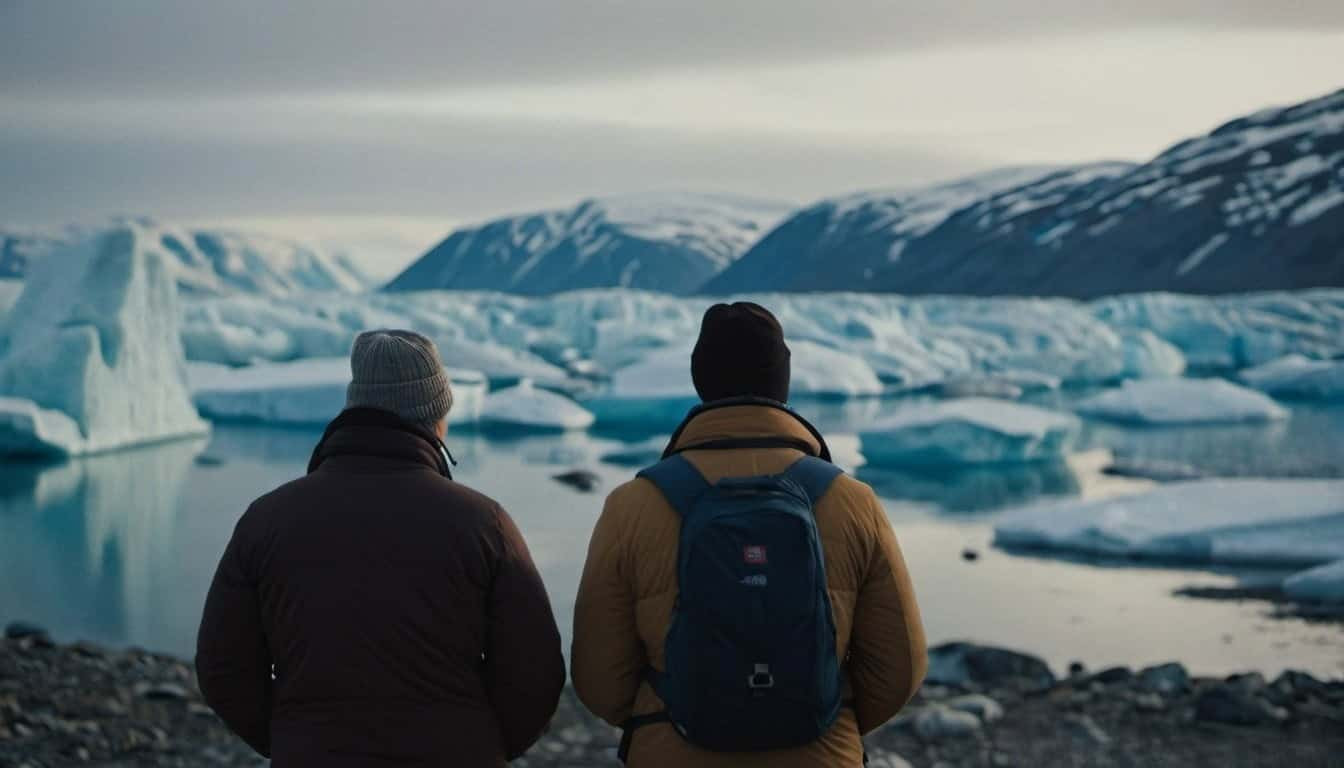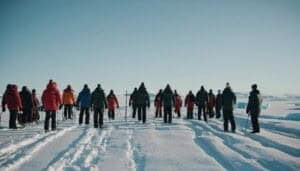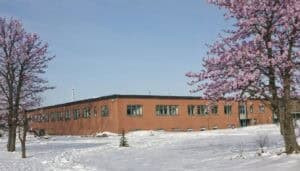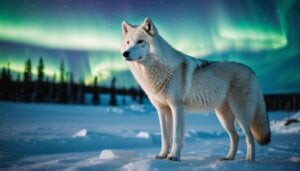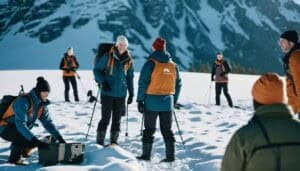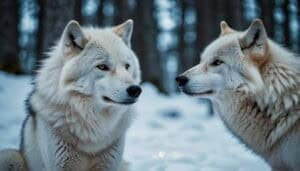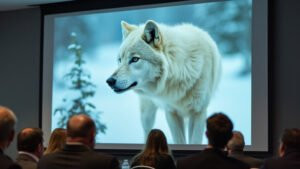Introduction
Ecotourism programs have emerged as a vital tool in the conservation of Arctic wolves, offering numerous benefits that extend beyond mere financial support. These programs play a crucial role in funding research initiatives, educating the public, and protecting the natural habitats of these magnificent creatures
In this article, we will explore the various ways ecotourism contributes to Arctic wolf conservation. From minimizing human impact through responsible tourism practices to involving local communities in conservation efforts, we will examine the multifaceted approach needed to ensure the long-term survival of Arctic wolves
Join us as we delve into the challenges and solutions, and discuss how monitoring and evaluation can enhance the effectiveness of these programs
Benefits of Ecotourism for Arctic Wolf Conservation
Ecotourism programs offer a multifaceted approach to conservation, combining financial support with education and active involvement in habitat protection
These programs create a direct link between tourism and conservation efforts, ensuring that visitors contribute to the well-being of Arctic wolves while gaining a deeper understanding of the species and their environment
Funding for Research and Conservation
One of the primary benefits of ecotourism is its ability to generate funding for research and conservation initiatives. Ecotourism programs allocate a portion of their revenue to scientific studies, tracking, and monitoring the Arctic wolf population
This funding supports critical research on wolf behavior, health, and migration patterns. For instance, a study published in the Journal of Wildlife Management in 2021 highlighted how funds from ecotourism helped track the movement of Arctic wolves, providing valuable data for conservation planning
Moreover, these funds enable the implementation of conservation projects aimed at preserving the natural habitats of Arctic wolves. Restoration of degraded habitats and the establishment of protected areas are crucial components of these efforts
The Arctic National Wildlife Refuge, for example, has benefited from ecotourism revenues that support habitat conservation programs, ensuring that Arctic wolves and other wildlife thrive in their natural environments
Educational Programs and Awareness
Ecotourism plays a significant role in raising awareness about Arctic wolves and the challenges they face. Educational programs are often a core component of ecotourism initiatives, offering tourists in-depth knowledge about the species, their behavior, and their role in the ecosystem
Guided tours and interactive sessions with wildlife experts help visitors understand the importance of conservation efforts
These educational experiences extend beyond the tourists themselves, as they often share their newfound knowledge with others, spreading awareness and fostering a broader support network for Arctic wolf conservation. According to a 2022 report by the International Ecotourism Society, over 70% of ecotourists reported a heightened awareness of conservation issues after participating in educational tours
Habitat Protection and Restoration
Protecting and restoring the natural habitats of Arctic wolves is another critical benefit of ecotourism
Tourism activities are designed to minimize environmental impact while promoting the conservation of vital ecosystems. Ecotourism operators work closely with conservationists to identify key areas that need protection and to implement sustainable tourism practices
Habitat protection efforts often include measures such as regulating tourist access to sensitive areas, creating buffer zones, and rehabilitating damaged ecosystems. In some cases, ecotourism projects also support the reintroduction of native species and the restoration of natural food chains, which are essential for maintaining the ecological balance
For example, the successful rewilding projects in parts of Alaska have been partly funded by ecotourism revenues, showcasing the direct impact of these programs on habitat restoration efforts
By engaging in these activities, ecotourism not only provides immediate financial support but also contributes to the long-term sustainability of Arctic wolf populations and their habitats. This comprehensive approach ensures that conservation efforts are well-funded, scientifically informed, and supported by an educated and engaged public
Minimizing Human Impact Through Ecotourism
Ecotourism, when implemented with care, can significantly reduce the negative impacts of human activities on Arctic wolf habitats. By promoting responsible tourism practices, establishing regulations, and developing sustainable infrastructure, ecotourism ensures that the presence of visitors does not harm the delicate ecosystems that Arctic wolves rely on
Responsible Tourism Practices
Responsible tourism practices are at the core of minimizing human impact in ecotourism. These practices include limiting the number of tourists allowed in sensitive areas, ensuring that visitors follow designated paths, and educating tourists on the importance of respecting wildlife and natural habitats
For example, eco-guides often emphasize the importance of maintaining a safe distance from Arctic wolves to avoid disturbing their natural behaviors
Additionally, ecotourism programs often implement Leave No Trace principles, which encourage tourists to minimize their environmental footprint by carrying out all waste, avoiding the picking of plants, and refraining from feeding wildlife. These principles help preserve the pristine conditions of Arctic wolf habitats
Regulations and Guidelines
The success of ecotourism in conserving Arctic wolves heavily relies on the establishment and enforcement of regulations and guidelines
Governments and conservation organizations often collaborate to create policies that protect wildlife and natural resources while allowing for sustainable tourism. For instance, permits may be required for certain activities, and strict quotas can be set to control the number of visitors in ecologically sensitive areas
These regulations not only protect Arctic wolves and their habitats but also ensure that tourism activities are conducted in a manner that prioritizes conservation. Regular monitoring and evaluation of these guidelines help adapt and improve them based on the changing needs of the environment and the species it supports
Sustainable Infrastructure Development
Developing sustainable infrastructure is crucial for minimizing the environmental impact of ecotourism. This includes constructing eco-friendly lodges, trails, and viewing platforms that blend seamlessly with the natural surroundings and have minimal ecological footprints. For example, many ecotourism sites in the Arctic use renewable energy sources, such as solar or wind power, to reduce reliance on fossil fuels
Water and waste management systems are also designed to minimize pollution and conserve resources
Composting toilets, greywater recycling systems, and waste separation facilities are common features in ecotourism accommodations. These infrastructure developments not only provide a comfortable experience for tourists but also demonstrate a commitment to environmental sustainability
Community Involvement in Arctic Wolf Conservation
Community involvement is a cornerstone of successful ecotourism programs. By engaging local communities, ecotourism not only provides economic benefits but also fosters a sense of stewardship and responsibility towards Arctic wolf conservation
This section explores how local communities can play a vital role in conservation efforts through economic benefits, community-led initiatives, and training and employment opportunities
Economic Benefits for Local Communities
Ecotourism generates significant economic benefits for local communities, providing an alternative source of income that can reduce reliance on unsustainable practices such as hunting or resource extraction
Tourists often spend money on local accommodations, food, and guided tours, which directly supports the local economy. For example, a study published in the Journal of Sustainable Tourism in 2022 highlighted that communities involved in ecotourism projects saw a 25% increase in household incomes
These economic benefits incentivize local communities to participate in and support conservation efforts. When community members see a direct financial benefit from the presence of Arctic wolves, they are more likely to engage in protective measures and discourage activities that could harm the wolf population or their habitat
Community-Led Conservation Initiatives
Empowering local communities to lead conservation initiatives is another effective strategy for protecting Arctic wolves. Community-led projects can include monitoring wolf populations, reporting illegal activities, and managing protected areas
For instance, Indigenous communities in the Arctic regions have traditional ecological knowledge that is invaluable for understanding and managing local wildlife populations
Collaborative efforts between conservation organizations and local communities often result in more effective and sustainable conservation strategies. These partnerships leverage the unique knowledge and skills of community members, ensuring that conservation measures are culturally appropriate and locally supported
A notable example is the Arctic Council’s initiatives, which have successfully involved Indigenous communities in wildlife monitoring and habitat restoration projects
Training and Employment Opportunities
Ecotourism also creates training and employment opportunities for local residents, further integrating them into conservation efforts. Training programs can include wildlife guiding, eco-lodge management, and environmental education, equipping community members with the skills needed to participate in and benefit from ecotourism
Employment opportunities in ecotourism can range from tour guides to conservation officers, all of which contribute to the overall goal of Arctic wolf conservation. These jobs not only provide a steady income but also foster a connection between the community and the local environment
A report by the World Wildlife Fund in 2023 noted that ecotourism employment has led to a greater appreciation of natural resources and a stronger commitment to conservation among local populations
Challenges and Solutions in Ecotourism for Arctic Wolf Conservation
Implementing ecotourism programs for Arctic wolf conservation comes with its own set of challenges. Addressing these challenges effectively requires a balanced approach that considers both the needs of the wildlife and the interests of tourists and local communities
This section examines the key challenges and presents potential solutions to ensure the long-term success of ecotourism initiatives
Balancing Tourism and Conservation
One of the primary challenges is finding the right balance between tourism and conservation. While ecotourism brings much-needed funds and awareness, an influx of visitors can sometimes disrupt the natural behaviors of Arctic wolves and degrade their habitats. Managing this balance requires careful planning and regulation
Solutions to this challenge include setting visitor limits, creating off-peak tourism seasons, and designing controlled access points to sensitive areas
By regulating the number of tourists and their activities, conservationists can minimize disturbances to the wolves. For instance, guided tours can be restricted to specific times and locations that have less impact on the wolves’ natural behaviors
Addressing Environmental Concerns
Environmental concerns, such as pollution, habitat degradation, and climate change, pose significant threats to Arctic wolf conservation. Ecotourism activities, if not managed properly, can contribute to these issues. It is essential to address these concerns to ensure that ecotourism remains a viable conservation tool
Implementing strict environmental guidelines and using sustainable practices can mitigate these impacts. For example, ecotourism operators can adopt renewable energy sources, enforce waste management protocols, and promote water conservation. Additionally, educating tourists about the environmental impacts of their activities and encouraging responsible behavior can further reduce the ecological footprint of ecotourism
Ensuring Long-Term Sustainability
Ensuring the long-term sustainability of ecotourism programs is another critical challenge. Conservation efforts need to be ongoing and adaptable to changing environmental and socio-economic conditions. Long-term sustainability requires continuous funding, effective management, and community involvement
To address this, ecotourism programs should establish financial mechanisms such as conservation funds, where a portion of tourism revenue is reinvested into conservation projects. Developing adaptive management plans that are regularly reviewed and updated based on monitoring data and community feedback is also crucial. Engaging local communities in decision-making processes ensures that conservation efforts are supported and sustained over time
Monitoring and Evaluating Ecotourism Programs
To ensure the effectiveness and sustainability of ecotourism programs aimed at Arctic wolf conservation, continuous monitoring and evaluation are essential. This process helps identify the successes and shortcomings of current initiatives, enabling the adaptation and improvement of conservation strategies
Tracking Arctic Wolf Populations
Monitoring the population and health of Arctic wolves is a critical aspect of evaluating ecotourism programs. Regular population surveys and health assessments provide valuable data on the status of the wolf population and the effectiveness of conservation efforts. Technologies such as GPS collars and camera traps are often used to track wolf movements and behaviors
For example, a study conducted by the Wildlife Conservation Society in 2020 utilized satellite tracking to monitor the migratory patterns of Arctic wolves, revealing important information about their range and habitat use. Such data helps conservationists make informed decisions about habitat protection and management
Assessing Environmental Impact
Evaluating the environmental impact of ecotourism activities is necessary to ensure that they do not harm Arctic wolf habitats
This involves assessing changes in vegetation, soil quality, water sources, and overall ecosystem health. Regular environmental impact assessments (EIAs) can identify areas where tourism activities may be causing harm and recommend mitigation measures
For instance, the International Union for Conservation of Nature (IUCN) guidelines suggest conducting EIAs before initiating any ecotourism project and continuously monitoring the environment throughout its duration. Implementing these guidelines helps maintain the ecological integrity of the areas frequented by Arctic wolves
Adapting Programs Based on Feedback
Feedback from tourists, local communities, and conservationists is invaluable for adapting and improving ecotourism programs. This feedback can highlight strengths, such as successful educational initiatives, as well as areas needing improvement, like overcrowded tourist spots or ineffective regulations
Incorporating this feedback into adaptive management plans ensures that ecotourism programs remain responsive to the needs of both Arctic wolves and the people involved. For example, a 2021 review by the Ecotourism Society found that programs incorporating regular feedback loops were more successful in achieving conservation goals compared to those with static management plans
Conclusion
Ecotourism programs play a crucial role in the conservation of Arctic wolves by providing financial support, fostering education and awareness, protecting and restoring habitats, and actively involving local communities. These programs help balance the needs of tourism with conservation efforts through responsible practices, strict regulations, and sustainable infrastructure development
By addressing challenges such as environmental impacts and ensuring long-term sustainability, ecotourism can effectively contribute to the preservation of Arctic wolf populations
Continuous monitoring and evaluation further enhance the success of these initiatives, making ecotourism a powerful tool in the fight to protect these magnificent creatures and their natural habitats. Through collaborative efforts and adaptive management, we can ensure that Arctic wolves thrive for generations to come
